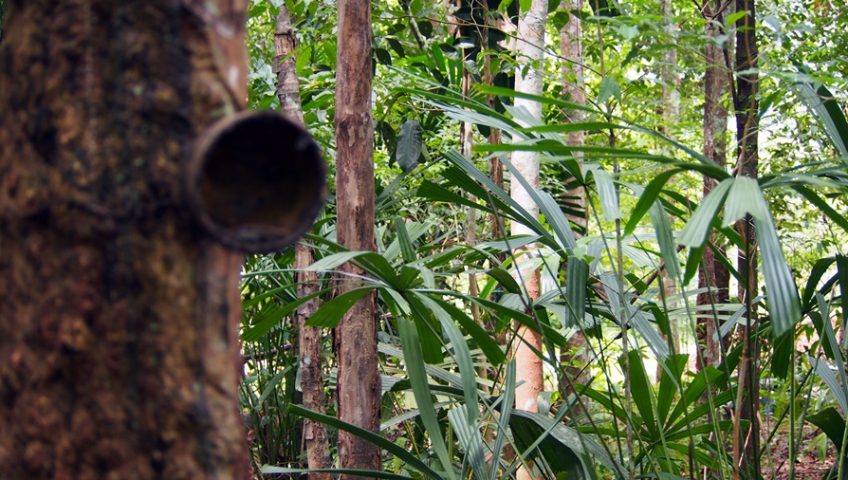
Agricultural insurance specialist calls for improvement of regulatory environments and increased interest by financial stakeholders, governments and multilateral bodies, more funding of research, in diverse, tree-based farming systems to address the climate- and biodiversity crises and support transformation of the world’s food system.
After years of neglect, biodiversity is back on the political agenda as scientists ring the alarm bells that some 1 million plant and animal species face extinction and our lifestyle is threatening the vary basis of our wellbeing.
In the arenas of development cooperation and agricultural financial risk management, the topic of agricultural insurance to increase smallholders’ resilience to the climate crisis’s inscrutable humours has become a major driver for the development of a significant number of agricultural insurance schemes in developing and transitioning countries.
At the same time, the ongoing biodiversity loss has been attributed to a global root cause: land-use change for agriculture. Discussions on the future global biodiversity governance framework to be implemented at the end of 2020 require more action and less text. Lack of adequate finance is a major restraint. Choices on the types of agricultural development models needed are a global challenge. Biodiversity conservation and biodiversity-rich landscapes require private-sector money invested in sustainable land uses without lowering investments in protected-area networks. Insurance schemes have an important role to play in lowering the risks for these investors.
Whether in Africa, Central and South America or Central, North or Southeast Asia, many of the existing agricultural insurance schemes have been very effective in giving hope and substance to millions of farmers.
Parametric or index insurances have been particularly paramount in this trend, extending this risk-transferring mechanism to previously unsupported areas. These insurances rely on specific indicators (for example, precipitation, temperature, wind speed, hours of sun) that are especially important during plant development stages or seasons (for instance, a recognised fire season affecting a forested region) and are highly correlated to losses in the field.
Historical regional yields can also be used as an index against which deviations can be measured. Using large sets of data and reinforced by technological advances, such as modelling, satellite remote sensing, weather stations and mobile money, they can be remotely monitored and deliver quick pay-outs that reduce moral hazard, anti-selection, asymmetry of information and, thereby, provide a trustworthy risk-transfer mechanism.
Considering that traditional insurance is usually expensive to monitor and depends on a good infrastructure for travel and a trained, reliable workforce to assess losses in the field, many farmers who were previously unsupported by a risk-transfer mechanism or had no financial identification, are now ‘banked’ and have more peace of mind to cope with uncertainty. This is because many bank loan schemes have usually been attached to a parametric insurance scheme.
As we know, farming is, per se, an activity subject to natural volatility because it depends on natural phenomena that, up to this moment, are not yet in the realm of possibilities for humans to control at source.
It also depends on a number of other factors, such as input and output prices, driven by ever more globalized trends of offer and demand, access to markets and even the health of the farmer and/or his family to continue this noble activity.
This is even more worrying for smallholders in low-income countries whose income profile is usually heterogeneous but, which, at the core, depend on a crop or two per year, which, if lost, can mean a transition to other alternatives of income (sometimes extremely detrimental to human dignity, like mendicancy or prostitution) or cutting back on costs (for example, pulling children out of school to save money and thereby also bringing extra sets of arms for work to produce family income), possibly further impairing opportunities for social mobility of a family or a society as a whole or even by destroying a country´s natural resources (through poaching, logging etc) to make ends meet.
It´s obvious then that improving conditions for smallholders in low-income and transitioning countries to access finance is, arguably, a very good thing because it will better equip them to withstand the natural volatility of farming, for example, to buy better, more expensive seeds with higher yields or resistance to diseases induced by climate-related phenomena; to buy land to expand the farmed surface area and increase revenue; to buy expensive fertilizers to improve quality and or productivity; to buy machinery to reduce manual labour and lessen operational costs and, ultimately, develop higher profitability-inducing systems enhanced by ever-changing behavioural patterns brought about by climate change.
A winning formula — although not without its difficulties — agricultural insurance in developing and transitioning countries is being used mainly through either directly serving the farmer by, usually, aggregators or, indirectly, by protecting a lender´s (for example, banks, multilateral financial institutions) exposure to a farmer’s possible default on paying a loan that promised a new venture or the continuity of an existing one.
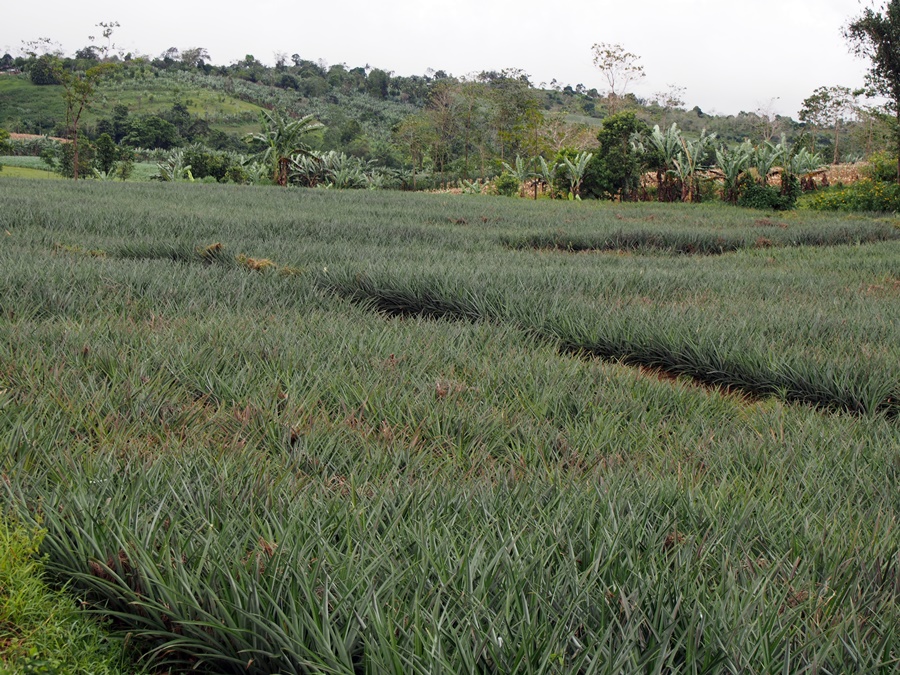
But is the equation fully understood? Are there more elements that are not yet and should be considered? Are we improving smallholders’ income profiles at, possibly, the detriment of something else that affects all of us on a global scale?
We believe that another element needs to be considered in the agricultural financial world and as soon as possible.
Currently, our livelihoods as a species and of all the other species that inhabit this world, with its different ecosystems and amazing diversity of life, are at a crossroads. The climate crisis, triggered by anthropomorphic drivers, is pushing an incredible wedge between the natural world and the ‘human world’ (as if we didn’t come from the same primeval yolk). This is a huge pressure across all continents and over different ecosystems, directly and indirectly, which is reducing biodiversity at an alarming rate.
Several studies confirm these trends and the UN has inscribed biodiversity as its Sustainable Development Goal 15, aiming to ‘protect, restore and promote sustainable use of terrestrial ecosystems, sustainably manage forests, combat desertification, and halt and reverse land degradation and halt biodiversity loss’. Making choices on the agricultural development and production models that are promoted and invested in is key to reversing this trend.
As recently as 2018, the United Nations Development Programme developed what is called the BIOFIN (Biodiversity Finance) workbook, which reveals huge untapped opportunities to finance biodiversity. It also reveals that biodiversity finance is, in fact, largely unmeasured. This document and the predicates it defends are duly supported by a number of bodies, from governments through to multilateral organizations. The book proposes to ‘… develop a biodiversity finance plan that identifies and mobilizes the resources and policies required to implement the most suitable finance solutions’. One of the possible tools mentioned to drive more funding for financial solutions for biodiversity is insurance, although no specific examples on agricultural insurance are given.
Overall, farming for food security currently relies on 150 plant species. Seventy-five percent of the global food supply comes from only 12 plant and five animal species. Just three (rice, maize, wheat) make up nearly 60 percent of calories from plants in the entire human diet.
Promoting through conventional means a farmer’s ability to become more resilient in the face of the climate crisis may be driving, unfortunately in our view, a potential imbalance between the legitimate need to improve her or his livelihoods and the loss of biodiversity. Why?
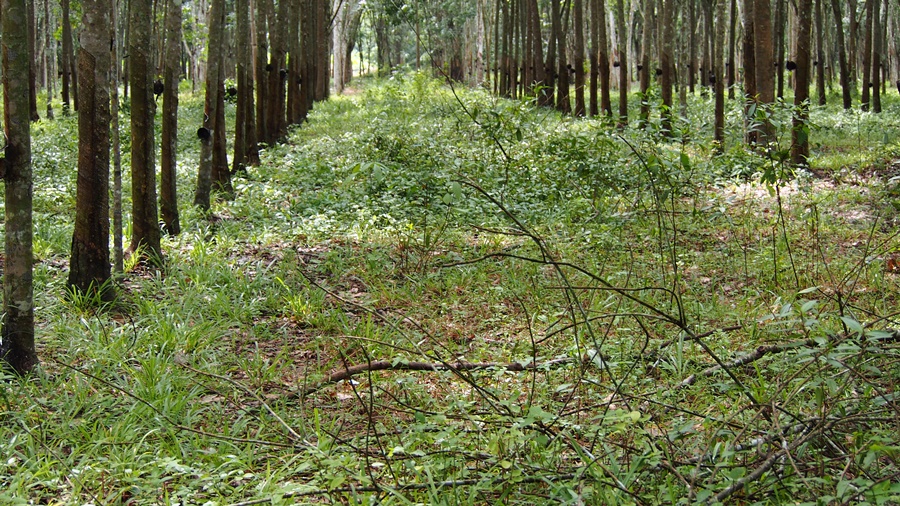
Because although insurance may give peace of mind to either lenders or farmers, for farmers improvement of their ability to make a turnover at the end of a crop cycle may lead to further specialization and intensification that is, hardly, an enhancer of biodiversity.
It may also motivate farmers, through access to finance, to expand their operational surface area at the expense of local autochthonous biomes, which usually include trees. This is the case, for instance, in the area of sun coffee in some Southeast Asian territories, which has been increased at the expense of narrowing the local forest surface area, with all the loss of wildlife and biodiversity that comes with it.
Or simply the substitution of shade coffee of the variety arabica for sun coffee of the variety robusta owing to the demand for soluble coffee in many newly affluent markets in the world. Development and economic growth create these paradoxes, unfortunately.
Most funding for research in agriculture over the last 60 to 70 years has been given under a model that focuses on three main species of plants (rice, maize and wheat), on the basis of enhancing the food-security profiles of countries and humanity as a whole.
The whole agricultural system and its value chains promotes this mainly monocultural business model, based on 100-plus species that until not so long ago (23,000 years) were progressively tamed by humans. This is in part because to make any investment in agriculture viable, sustainable and optimal, it is claimed that one needs to treat the field as an assembly line, easy to replicate and generating a result that is predictable, reducing the natural volatility of farming itself.
With growing numbers of humans populating our planet and more and more people being taken out of poverty in the last 20 to 30 years (China alone managed to do this for 800 million) the pressure is ever greater because it is only ‘natural’ that newly affluent individuals want to have their existence and that of their children improved and start having food choices that require industrial processing on a large scale.
Consequently, the pressure on our natural landscapes is immense, not only for food to sustain a growing population but for all the precious metals that inhabit our electronic appendices.
Having said this, are there other agricultural farming models that could be given the same opportunity to be evaluated, experimented, stretched in terms of their ability to provide food security whilst at the same time keeping and promoting biodiversity?
How to solve this conundrum? We believe that the answer is to strengthen the interest of donors, lenders and grantors in financing the development of solutions that focus on agricultural system as a primary underwriting filter. Mixed agricultural or agroforestry systems typically use trees as either a long-standing alternative means of income (standing timber for different uses) or use the products derived from the trees (fruit, nuts, bark etc) for a more regular yearly income or as ‘tutors’ to the main crop, as happens with shade coffee and cocoa.
Research from ICRAF confirms that trees on farms reduce certain perils, such as landslides through root anchoring of the soil’s upper layers whilst also reducing erosion; increasing the retention of underground water-reserves; facilitating organic matter to accumulate in the soil; reducing the need for herbicides to eliminate competition with the main crop; and lessening the need for pesticides to eliminate certain pests and diseases. Also, drought and fire can be mitigated by balancing the soil-water systems that, when unbalanced (higher temperatures, lower humidity, no wind barriers provided by tree cover) trigger the conditions for wild forest fires that are impossible to control. This applies even more so in low-income communities with non-existent fire-fighting structures.
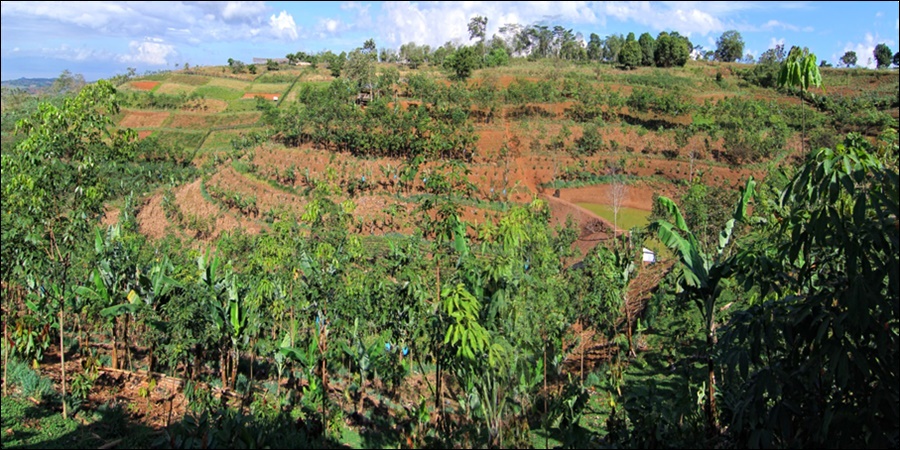
Autochthonous species of trees, natural and adapted to the soil–climate features of the region where a farm is located, help sustain a healthy balance of species in one given area, maximizing pollination, sequestering carbon and preventing desertification. Isn’t this a winning formula?
It is easy to bring to the discussion table the claim that operating costs can be lowered by simply managing well the species’ profile, using better-quality seedlings and improving farming techniques that maximize profitability of this farming system. Imagine if the same focus on an agricultural model that depletes entire natural landscapes of their original cover, reducing biodiversity, could be put into systems that promote biodiversity as well as food security and profitability? We need to find the best ways to make our food systems more profitable and secure but without compromising biodiversity. This is much needed for our survival.
The agricultural insurance and finance industry as a whole needs to include more and more often the ‘biodiversity card’ in their equations and motivational pitches to justify gathering funding. ICRAF through its project, Harnessing the Potential of Trees on Farms to Meet National and Global Biodiversity Targets, which focuses on five countries (Uganda, Rwanda, Honduras, Peru, Indonesia), and the Support to the Integrated Natural Resource and Environmental Management Project in the Philippines is trying to bridge this gap.
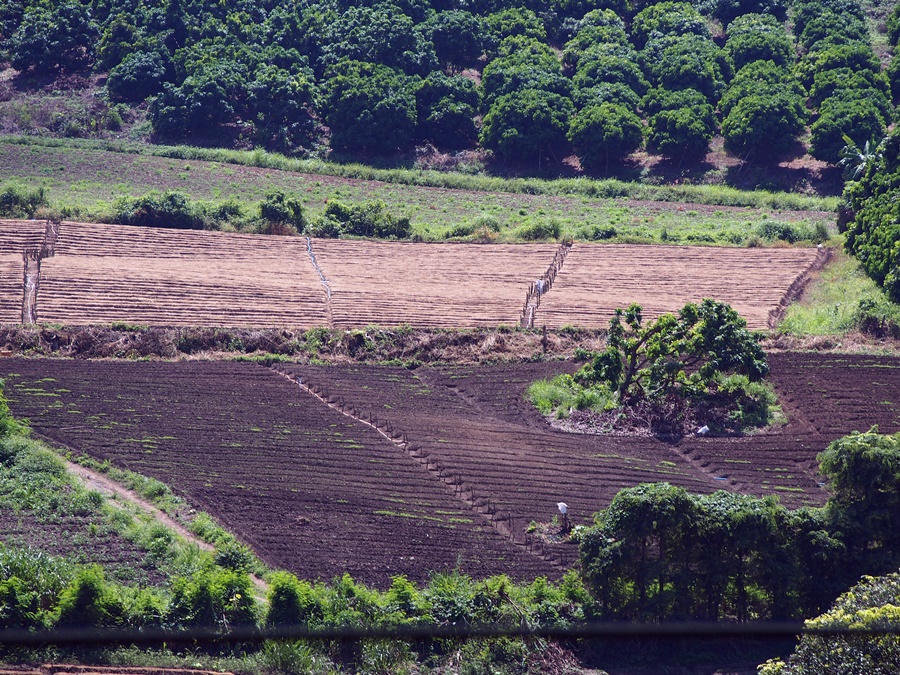
We are developing solutions that help farmers to become more socially mobile and promote food security, yes (and very well), but which also recognizes the long-term issue of also keeping the climate crisis’s effects at bay and biodiversity abreast. Because humanity and the sustainability of our planet depend on this. Biodiversity has a climate-change component because much of the systems that are biodiversity-rich are inherently stoppers of climate change by naturally maintaining patterns of the water cycle, carbon sequestration and reduction of air temperature, like they always did before anthropogenic intervention.

World Agroforestry (ICRAF) is a centre of scientific excellence that harnesses the benefits of trees for people and the environment. Knowledge produced by ICRAF enables governments, development agencies and farmers to utilize the power of trees to make farming and livelihoods more environmentally, socially and economically sustainable at multiple scales. ICRAF is one of the 15 members of the CGIAR, a global research partnership for a food-secure future. We thank all donors who support research in development through their contributions to the CGIAR Fund.

